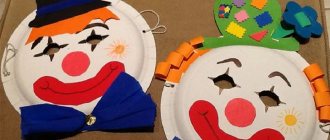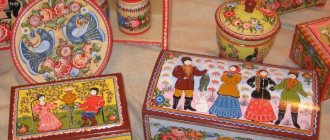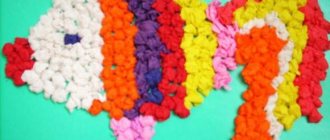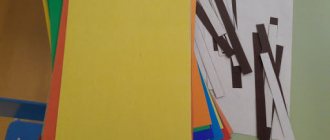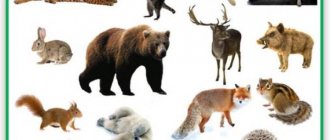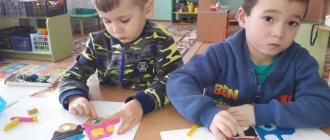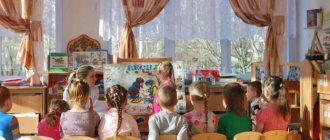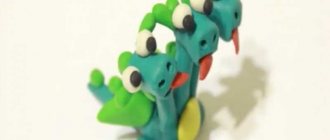Application “Multi-colored traffic lights”
SUMMARY OF DIRECT EDUCATIONAL ACTIVITIES IN THE SENIOR APPLICATION GROUP. Topic: “Multi-colored traffic lights.” Priority educational area: artistic and aesthetic development. Objectives: Educational: improve the ability to cut circles from squares, rounding the corners; learn to compose an image of a traffic light from several parts; consolidate children's knowledge of traffic rules. Developmental: develop fine motor skills of the hands; develop children's creative activity; promote the development of memory, attention, thinking; develop children’s ability to follow received oral instructions. Educational: to cultivate accuracy when working with glue; cultivate a positive attitude towards work. Preliminary work: conversation about traffic rules, examination of the traffic light layout. Methods and techniques: riddle, didactic game, demonstration, explanation, practical activities of children, analysis. Materials and equipment: traffic light layout, sample, sheet of white paper in A3 format, rectangle of black paper, squares of red, yellow and green, PVA glue, glue brush, oilcloth, rag. Handouts: a sheet of white paper in A3 format, a rectangle of black paper, squares of red, yellow and green, PVA glue, a glue brush, an oilcloth, a rag. Progress of the lesson. Introductory part. Educator: guys, guess the riddle: Here is a three-eyed fellow. How cunning he is! Whoever comes from anywhere will wink at both this and that. Knows how to settle a dispute, Multicolored... Children: traffic light! Educator: Guys, what is a traffic light for? (children’s answers) Educator: now let’s play the “Yes and No” game. I will ask you questions, and you listen carefully and answer “yes or no.” Are traffic lights familiar to all children? Does everyone in the world know him? Is he on duty by the road? Does he have arms, legs? There are flashlights - three eyes?! Does he turn them all on at once? So he turned on the red light. Does that mean there is no movement? Which one should we go to? Blue - can it be an obstacle? Shall we go to yellow? On green - binge drinking? Well, we’ll probably stand on the green then, right? Is it possible to run on red? Well, what if you're careful? And then, of course, you can walk in single file? I believe my eyes and ears. The traffic light is familiar to all of you! And, of course, I am very happy for the literate guys! Educator: guys, let’s make a traffic light today? Children: come on! Main part. Educator: guys, look at the traffic light and tell me how many eyes the traffic light has? Children: the traffic light has three eyes. Educator: what shape are they? Children: they are round in shape. Educator: what color are these eyes? Children: red, yellow and green. Educator: guys, remember how these colors are located! What color is the eye at the top? Children: at the top – red. Teacher: What color is in the middle of the eyes? Children: in the middle - yellow. Educator: what color is below? Children: below – green. Educator: now look carefully at how we will make a traffic light (explanation with demonstration). First, take a black rectangle and cut off a long strip from it (from the long side) and a short strip (from the short side). Then we take squares of red, yellow and green colors and round the corners. Then we collect the image and glue it. Press with a napkin. The traffic light is ready! Educator: guys, let's repeat how we will make a traffic light? (Children say the order of doing the work) Educator: That's right! Let’s also remember the rules for working with scissors, because scissors are not a toy. Scissors are a tool. Children look at the pictures on the board and say the rules. Educator: Guys, before we start making a traffic light, let's relax and play. Physical exercise “Traffic light” One, two, three, four, five, (stretching) Oh, we’re tired of standing. We will play “Traffic Light” (walking in place) Stretch our arms and legs. The red color shouts “Stop” to us (tilts, turns of the body) The green color tells us to wait. We lean together And back and forward, Right, left turn. So the yellow light comes on (squats) It’s time to get ready. Hands and feet warmed up. Let's start, kids. Here the green light turns on, (walking after each other) We can go forward. Left, right, left, right. Bravely, we move forward The glorious assistant of the traffic light does not let us get tired. Children sit at tables and complete the task. Practical work for children. The teacher monitors the progress of the work. Final part. Educator: guys, you all did your best, that’s why you got such wonderful traffic lights! Did you like making traffic lights? (Yes!) I also liked the way you worked today, well done!
Summary of the lesson on designing “Round Dance of Friendship”
Municipal autonomous preschool educational institution
"Kindergarten No. 36 of a general developmental type."
Summary of the lesson on designing “Round Dance of Friendship”
in the preparatory group
Conducted by Pozdeeva L.V.
Tasks:
Continue to teach children how to design a toy based on a cone, independently cut out and connect the parts together in the specified sequence and according to the pattern. Practice making patterns from strips of paper of different colors, beautifully placing them on the details of clothing: the hem of the dress, the sleeves
· . Give children an idea of planet Earth; introduce dolls of different nationalities; teach the ability to work with paper and cardboard; consolidate skills in working with scissors and glue, form auditory attention, memory, thinking; the ability to reason and draw conclusions based on the information received.
· . To deepen children's understanding of kindness as a valuable, inherent quality of a person. Develop children's creative abilities and teamwork skills.
· Cultivate moral and emotional qualities: patience, attentiveness, sympathy, empathy, friendship.
Vocabulary work:
Round dance, friendship, harmony.
Preliminary work:
Examination of the globe, dolls of different nationalities, conversation about the native land, friendship of the peoples of the world.
Materials used:
Globe, dolls of different nationalities, cardboard, colored paper.
Methods:
Verbal, Visual and demonstration, Practical.
Integration of educational areas:
“Cognition”, “Communication”, “Work” “Music”.
National Unity Day. For this holiday, the teacher should invite students to make an applique of a round dance of children in costumes of the nationalities of Russia with the corresponding national symbols.
National Unity Day. For this holiday, the teacher should invite students to make an applique of a round dance of children in costumes of the nationalities of Russia with the corresponding national symbols
Progress of the lesson
Educator:
Hello guys. I invite you to my workshop, where we will make a round dance of friendship with dolls. And the magic rope will help us with this. But before we start work, we will talk with you. I ask you to sit down at the table.
Educator:
Children, what planet do you and I live on?
Children:
On the Earth.
Educator:
Right. Let's look at the diminutive model of our planet - the globe.
If we travel around the globe, we will meet people of different nationalities who have their own traditions, culture, and customs. But they differ not only in this, but also in appearance.
Look, this doll is from Japan. Japan is the land of the rising sun, which is located in the East of Russia. What country do you think this doll is from?
Children:
From Africa.
Educator:
Right. Africa is a whole continent where Arabs and blacks live.
And this doll is from Austria. Austria is located in the center of Europe.
This doll is from Portugal. Portugal is located in South-West Europe
Show of dolls.
Educator:
Look, they differ from each other in skin color, hair color, eye shape, national clothing. But all over the planet people dream of living in peace and friendship. Guys, let us do a “Round Dance of Friendship”.
Educator:
And for this we have cardboard and colored paper, we will make a cone from cardboard - this will be the basis for making a doll.
We coat the edges with glue and glue them together, cut out the head using a stencil, draw eyes, nose and mouth with a felt-tip pen, decorate the clothes with various patterns.
Children complete the task.
Educator:
Look what wonderful dolls we have made. They are different, like all people on the planet.
Educator
: Guys, did you enjoy traveling around the countries?
What object helped us with this? (Globe).
What nationalities of dolls did we meet?
Guys, let’s take our round dance of dolls and stand in a circle with them, and the song “Let the sun shine” will help us with this.
Let's hold hands and stand in a circle.
Every person is a friend to another.
Let's hold hands - let it pass
There is a huge round dance on Earth.
Children perform a song.
Educator:
Thank you guys for your round dance. I think that all the dolls will be happy with such a beautiful round dance.
The teacher offers samples of dolls for viewing.
—What are these dolls made of?
-What's on their head?
—What are the clothes decorated with?
Then the teacher shows and explains the sequence of making the doll:
1) Cutting out all the details (the teacher has them cut out in advance);
2) Partial demonstration of drawing a face and patterns on clothes with an explanation of how best to place patterns on parts of clothes;
3) Making tukhia: drawing an embroidery pattern and gluing foil circles - “coins”;
4) Gluing parts to obtain a doll.
Next, the teacher reminds you what Chuvash embroidery patterns can be used to decorate clothing details.
Children go to the tables and begin to work independently. The teacher provides assistance in choosing patterns for drawing embroidery, colors, and location of patterns on parts.
At the end of the lesson, children arrange a round dance of dolls, choose the doll they like, motivating their choice. You can invite children to talk about their doll.

